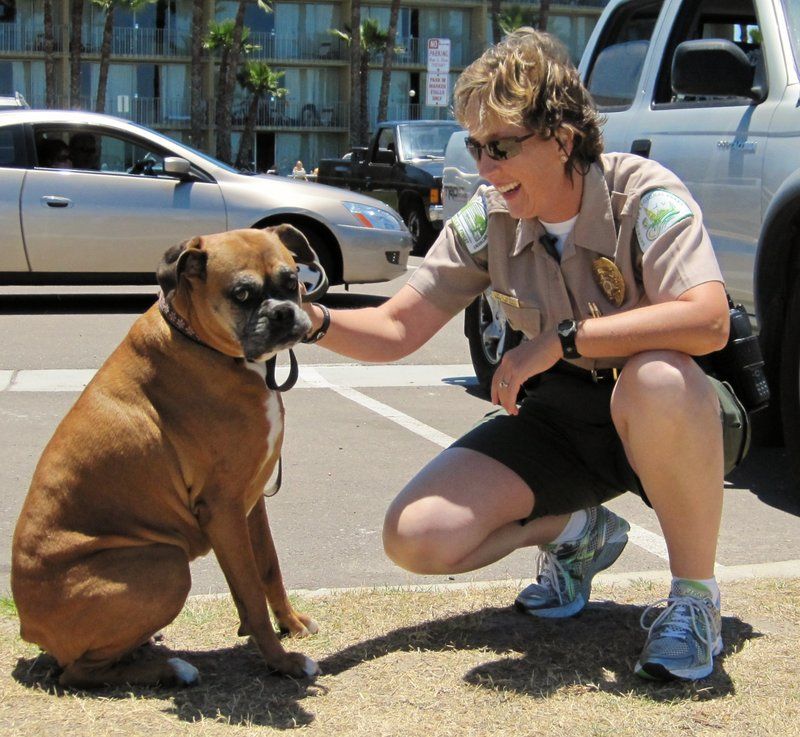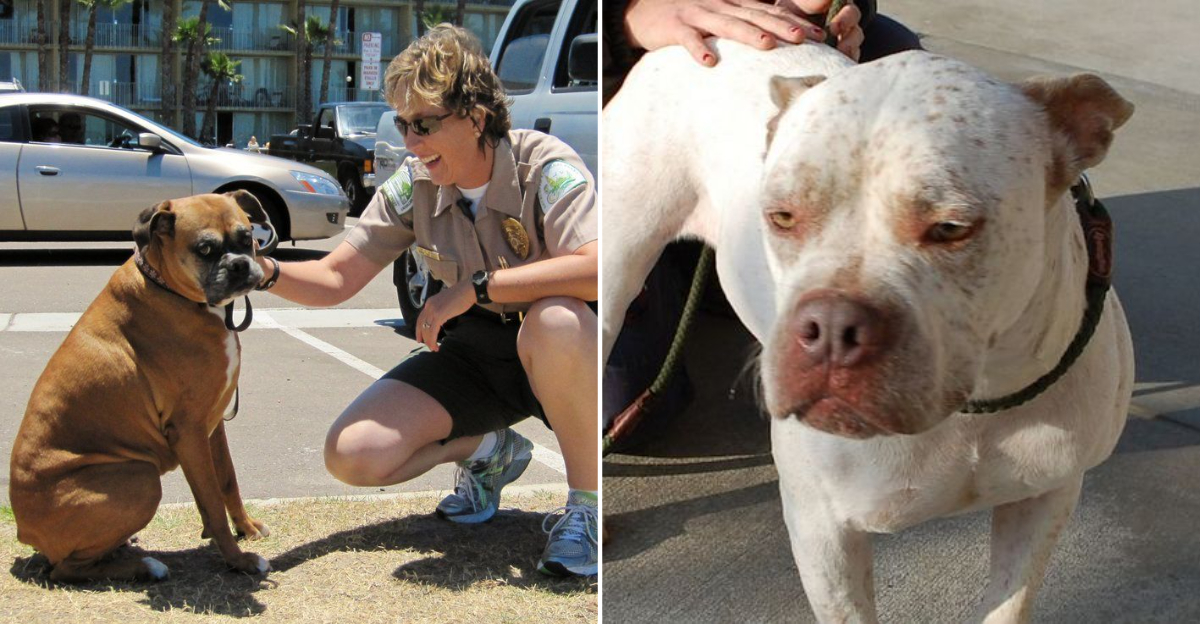California’s dog laws come in shapes and shades—from leash limits and microchip mandates to bite liability and hot-car regulations.
When my golden retriever Max and I relocated to San Diego, I quickly learned that dog rules change faster than LA traffic.
These laws aren’t just bureaucratic hurdles—they reflect a commitment to public safety, animal welfare, and responsible ownership.
Whether you’re a seasoned Californian or new pup parent, understanding these 11 contested laws can keep you—and your four-legged friend—happy, legal, and well-loved.
1. Leash Law Limbo: The Six-Foot Rule

Bet you didn’t know your dog’s leash could be breaking the law! In many California counties, leashes must be six feet or shorter in public spaces. I learned this the hard way when a park ranger approached me while Max was enjoying his retractable leash stretched to about 12 feet.
“But he’s well-behaved!” I protested, as Max ironically chose that moment to chase a squirrel. The ranger explained that even the best-trained dogs can be unpredictable, and longer leashes create unpredictable situations.
This restriction aims to prevent dogs from interfering with pedestrians, cyclists, and other dogs. While some owners feel this crimps their pup’s style, advocates point out that shorter leashes provide better control and can prevent dangerous situations before they happen.
2. Strict Liability: When Rover Bites

California doesn’t play the “one free bite” game that some states allow. Here, dog owners are strictly liable for bite injuries regardless of whether Fido has a spotless history or was previously the neighborhood chomper. This hit home when my neighbor’s previously gentle Corgi nipped a delivery driver’s ankle.
The law doesn’t care if your dog was provoked, scared, or having a bad day. If teeth meet skin, you’re legally responsible for medical bills and damages. Period.
While some owners argue this is unfair to dogs who bite due to fear or surprise, others appreciate the straightforward approach that prioritizes public safety. The only exceptions? If someone was trespassing or deliberately provoking the dog—though proving that can be tougher than teaching a Chihuahua to stay quiet.
3. Junior Handlers: Age Requirements For Dog Walking

My sister’s kids were devastated when they learned they couldn’t walk their new puppy alone in public. California law requires dog handlers in public to be at least 14 years old in many jurisdictions—a shocker for many families with eager young dog lovers!
The reasoning makes sense when you think about it. Controlling an excited or frightened dog requires strength, quick thinking, and maturity that younger children simply haven’t developed yet. A 50-pound dog can easily pull a 70-pound child into traffic or another dangerous situation.
Parents often push back against this regulation, arguing that their particular child is responsible enough. Meanwhile, safety advocates point to injury statistics that support the age minimum. My compromise? The kids can hold the leash, but only when I’m right beside them, legally serving as the actual handler.
4. The License To Bark: Mandatory Dog Registration

“You need WHAT for my dog?” I blurted when the animal control officer explained the fine I’d receive for Max’s missing license. Turns out, dog licensing isn’t just a suggestion in California—it’s the law, with fees ranging from $20 to over $100 depending on your location and whether your pooch is fixed.
Counties require proof of rabies vaccination before issuing licenses, creating a one-two punch of compliance for pet parents. The system helps reunite lost dogs with owners and ensures the rabies vaccine requirement isn’t just ignored.
Many owners grumble about this as another tax on pet ownership, while others see it as a small price for community safety. Pro tip from my expensive mistake: set a calendar reminder when your dog’s license expires—renewal notices don’t always arrive, but those fines definitely will!
5. Municipal Maze: When Dog Rules Change At City Limits

Last summer, I planned a perfect coastal road trip with Max, only to discover that dog laws are like California weather—they change dramatically depending on where you are. While San Francisco allows dogs on certain beaches during specific hours, Santa Monica might ban them entirely, and Huntington Beach has designated dog beaches.
Even leash requirements can flip-flop as you cross invisible city boundaries. One moment you’re legally letting Fido run free in a dog park, and 500 feet later, you could be facing a hefty fine for the same behavior.
This patchwork of regulations frustrates travelers and residents alike. I now keep a notes app on my phone with different city rules for our favorite destinations. While some advocate for statewide standardization, others defend local control that allows communities to create rules that match their unique environments and resident preferences.
6. Off-Leash Areas: The Designated Freedom Zones

“Freedom!” Max seems to shout whenever we enter our local dog park—one of California’s designated off-leash areas. These canine playgrounds are the only public spaces where dogs can legally roam untethered, creating both joyful reunions and heated confrontations among the four-legged park-goers.
The limited availability of these spaces often leads to overcrowding, especially in urban areas. I’ve witnessed more than a few arguments between owners when play turns too rough or when someone brings an aggressive dog into the mix.
Some California cities are responding to demand by converting underused parks or creating designated off-leash hours at existing parks. Meanwhile, controversy swirls around whether these areas should have separate sections for small and large dogs, if certain breeds should be restricted, and who’s liable when doggy disagreements turn into vet visits.
7. Breed-Specific Spay/Neuter Laws: Targeting Certain Dogs

When my friend adopted a pit bull mix in Los Angeles County, she was surprised to learn she had just 60 days to spay her new companion—a requirement that wouldn’t have applied if she’d chosen a Labrador or Poodle instead. Several California municipalities have breed-specific mandatory spay/neuter laws, primarily targeting pit bulls and related breeds.
Supporters argue these regulations reduce shelter populations and dog attacks. After all, unaltered males are statistically more likely to show aggression and roam, while unspayed females contribute to pet overpopulation.
Critics, however, cry discrimination, pointing out that behavior problems stem from irresponsible ownership, not breed genetics. They argue these laws unfairly burden responsible owners of targeted breeds while letting irresponsible owners of other breeds off the hook. The debate touches on deeper questions about breed stereotyping and whether government should dictate such personal pet decisions.
8. Hot Car Consequences: The Life-Saving Law

It’ll just be five minutes,” I overheard a shopper say as she left her panting Labrador in a car on a 75-degree day. I almost approached her with the news: in California, those five minutes could cost her up to $500 and potential animal cruelty charges!
California’s hot car law prohibits leaving pets in vehicles under conditions that endanger their health, including inadequate ventilation, extreme cold, lack of food/water, or any circumstance that could cause suffering. What many don’t realize is that cars can reach dangerously high temperatures even on mild days.
This law also authorizes first responders to break into vehicles to rescue distressed animals, and in some circumstances, even allows good Samaritans to do the same. While most pet owners support the intent, debates arise around enforcement consistency and what constitutes “reasonable” circumstances for citizen intervention versus waiting for authorities.
9. Microchip Mandate: The Digital Dog Tag

Max’s microchipping appointment felt like something from a sci-fi movie—a tiny chip injected between his shoulder blades that would forever link him to me in a database. In Los Angeles and several other California jurisdictions, this procedure isn’t optional—it’s mandatory for all dogs over four months old.
The rice-sized chip contains a unique ID number that, when scanned, connects to owner contact information. Shelters and vets report dramatically higher reunion rates for microchipped pets versus those without this invisible safety net.
Some pet parents worry about privacy implications or potential health risks, though studies show complications are extremely rare. Others question the government’s right to require a medical procedure, however minor. As someone who once lost a dog for three terrifying days before microchips were common, I’m firmly in the pro-chip camp, but I understand the debate touches on deeper questions about personal choice versus community benefit.
10. Barking Ordinances: The Noise Nuisance Laws

“Your dog has been barking for THREE HOURS!” The angry note from my neighbor made my heart sink. I had no idea Max was serenading the neighborhood while I was at work, but I quickly learned that his vocal performances weren’t just annoying—they were potentially illegal.
California municipalities enforce varied noise ordinances that classify excessive dog barking as a nuisance. In Los Angeles, for instance, dogs can’t bark continuously for ten minutes or intermittently for 30 minutes within a three-hour period. Violations can trigger warnings, fines, or even court appearances.
These laws pit dog owners against noise-sensitive neighbors in heated community battles. Dog defenders argue that barking is natural canine communication, while others maintain their right to peaceful enjoyment of their property. Finding the balance between normal dog behavior and consideration for neighbors remains one of the trickiest aspects of urban pet ownership.
11. Tethering Restrictions: The Anti-Chaining Law

The sight of a dog chained to a backyard tree for hours used to be common, but California said “no more” with its progressive anti-tethering law. I discovered this legislation while researching outdoor options for Max during my home renovations.
The law prohibits tethering dogs to stationary objects for more than three hours daily, and requires that any restraint used allows the dog to move freely without becoming entangled. Violators face escalating penalties starting with warnings and potentially ending with misdemeanor charges for repeat offenders.
Animal welfare advocates applaud these restrictions as preventing neglect and psychological damage to social animals. Some rural residents and working dog owners, however, argue the regulations don’t account for legitimate uses of tethering in agricultural settings or with certain working breeds. The debate highlights the challenge of creating one-size-fits-all rules for the diverse relationships between humans and canines.
